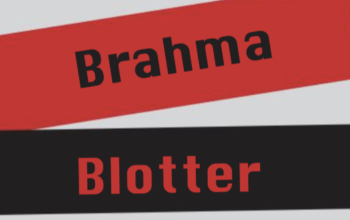Marion Kimble
An investigation report relating to allegations of racial profiling at Los Angeles Trade-Technical College (LATTC) was released in January, stating that the “saturation patrol” used by L.A. County Sheriff’s deputies on Oct. 17, 2007, was indeed a form of discrimination.The incident occurred when 14 sheriff’s deputies converged on the campus’ free speech area and stopped 34 students: 29 black males, four black females and one Hispanic male who was recording the incident on his cell phone, according to the report.For months leading up to the incident, the L.A. Sheriff’s Department (LASD) had been working with LATTC President Ronald “Chip” Chapdelaine to address the prevalent problem of drug dealing on campus.Ramon Castillo, vice president of student services and the administrator present during the operation, stated in the report that the administration was aware of the tactics to be used prior to the operation taking place.Castillo’s statement was supported by L.A. County Sheriff Lee Baca during his address to the Los Angeles Community College District (LACCD) Board of Trustees during a public session on Nov. 7, 2007.Chapdelaine further stated in the report that if had he been aware of the tactics, he would not have authorized the operation. The investigation was to address two allegations: first, that the actions of the LASD were indeed racial profiling and second, that Chapdelaine and Castillo approved and condoned the actions used by the LASD and were also engaged in a form of racial profiling. Gene E. Little, LATTC director of diversity programs and the investigator who wrote the report, found that racial profiling on the part of the LASD was evident as only 29 percent of the student population at LATTC was black at the time of the incident, yet nearly all of the students detained were black. His analysis showed that at the time of the incident, when students were changing classes, there was less than a one percent chance that 29 black males and four black females would be chosen at random.Little found that the second allegation could not be substantiated, noting that in accordance with the information provided by the LASD, the operation was condoned “in good faith.”The incident was not a common among every division of the Sheriff’s department.Lt. Mike Alerich of the Compton Sheriff’s Station was not familiar with the situation or the tactics used and felt that he did not have enough information to offer explanation. The names of the deputies involved in the incident, along with any of their statements, were not released to the public as per the police officer’s bill of rights, which states that an officer’s statements during an interview with an investigator conducting an investigation from within his own department cannot be used against him.Whether such a rule applies to an investigation by the LACCD is unclear, but Sara Faden, a media relations officer with the Los Angeles Police Department (LAPD) was unable to make any comment on the actions of another law enforcement agency.When asked if the “saturation patrol” used by the LASD was similar to that of the LAPD, Faden said, “That is a term I’ve never heard of.””We may have another name for it,” continued Faden. “That doesn’t sound like the way we do things.”To remedy the problem, Chapdelaine and the LATTC administration have issued apologies to all of the parties involved.David Ysais, media relations officer for LATTC, said that counseling was offered to not only the students involved, but to any student who requested it.Ysais said that the school hopes the actions brought the drug-dealing issue to the attention of the student body.”We are hoping our efforts have led to less activity,” said Ysais. “Blue ribbon panels have been set up to address issues that may be related.”There are three panels to be created at LATTC; one to focus on creating a drug-free campus, a second serve as an outreach to minority males and to make the campus more appealing to them and a third to address campus policies that need to be changed.”None of us want crime on our campus,” said Ysais. “I think there are a lot more people aware that there are things they need to pay attention to.”The first reports from the blue ribbon panels are expected to be released in late spring to early summer.



